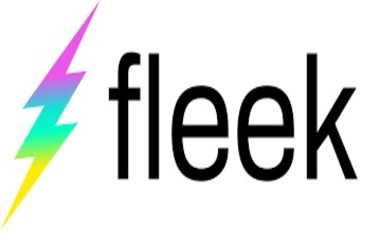
During an interview, Harrison Hines, the co-founder and Chief Executive Officer of Fleek, expressed that the contemporary web relies on microservices, which are further enhanced by an edge or content delivery network. These networks are the underlying technology that enables the exceptionally fast loading speeds that many individuals tend to overlook. One of the key benefits of serving content from a geographically proximate location is the reduction of latency and enhancement of application performance. According to Hines, it is crucial for all developers, not just those in the Web3 field, to have a high-performing edge or content delivery network (CDN) in order to meet the rapid loading requirements of contemporary internet users. The objective is to minimize latency by executing the tasks in proximity to the end user.
According to Hines, the significance of low-latency connectivity is highlighted by research conducted by Google. Based on data from Google, the probability of a bounce, defined as a visitor entering a website and promptly leaving, escalates by 32% when a webpage’s loading time falls within the range of one to three seconds. Furthermore, this likelihood surges to 90% when the loading duration extends to five seconds. One of the challenges faced by dApp developers is the absence of a native, decentralized edge infrastructure within Web3.
“At present, Web3 developers face the challenge of either attempting to independently develop these performance optimizations, a task that proves to be highly challenging, or resorting to a Web2 performance layer such as Cloudflare. However, the latter option compromises the decentralized principles, as well as the resilience, availability, and censorship resistance of their protocols and applications,” stated Hines. The decentralized edge of Fleek Network is scheduled to be launched in the testnet by the end of August. Once implemented, this technology will empower Web3 developers to create efficient decentralized applications (dApps) and services, eliminating the need for centralized content delivery network (CDN) providers such as Cloudflare. This approach mitigates the risks highlighted by Hines.
The protocol design of the Fleek Network ensures that the allocation of work to its nodes is determined by both their geographic location and their reputation score, which is based on their performance. In addition, the whitepaper outlines several other significant characteristics, including stateless execution, a core without a virtual machine, content addressing, and performance enhancements. The edge layer of Fleek Network expands upon its initial concept of a decentralized content delivery network (CDN). Significantly, it presents a novel protocol architecture that expands its capability to accommodate various use cases, including serverless functions, server-side rendering, container orchestration, and diverse database functions.
According to Hines, Edge Networks represent a progression from the concept and achievements of CDNs. Upon further examination of our initial CDN research and protocol architecture, we have come to the realization that by making a few adjustments, we can expand our capabilities beyond just CDN. This would enable us to accommodate a diverse range of valuable edge services that can be developed by anyone. The modifications enable us to cater to a significantly broader market and provide a multitude of additional potential use cases and components within the infrastructure stack.
The endeavor of establishing a global edge infrastructure is typically a colossal undertaking. However, what sets Fleek’s network apart is its ability to incentivize users to utilize their existing resources for this purpose. Individuals who operate nodes and engage in network-related tasks, such as providing content or executing computational tasks, are motivated by the prospect of receiving fees. Once the mainnet is launched, individuals will have the opportunity to operate Fleek’s node software and stake FLK tokens in order to provide support to the network. Hines also mentioned that an alternative method of participation involves the construction or utilization of edge services on the network. The process is akin to the construction and utilization of smart contracts on platforms such as Ethereum. However, the key distinction lies in the fact that services offered on the Fleek Network are primarily decentralized web services.
In conjunction with the publication of its whitepaper, Fleek Network is now providing access to its protocol through a newly established open-source GitHub repository. The scheduled launch of the testnet is set to take place at the end of August. Subsequently, new features will be incorporated, leading to the development of a comprehensive and fully functional testnet during the autumn season. The mainnet is scheduled to be operational either in the fourth quarter of 2023 or the first quarter of 2024.